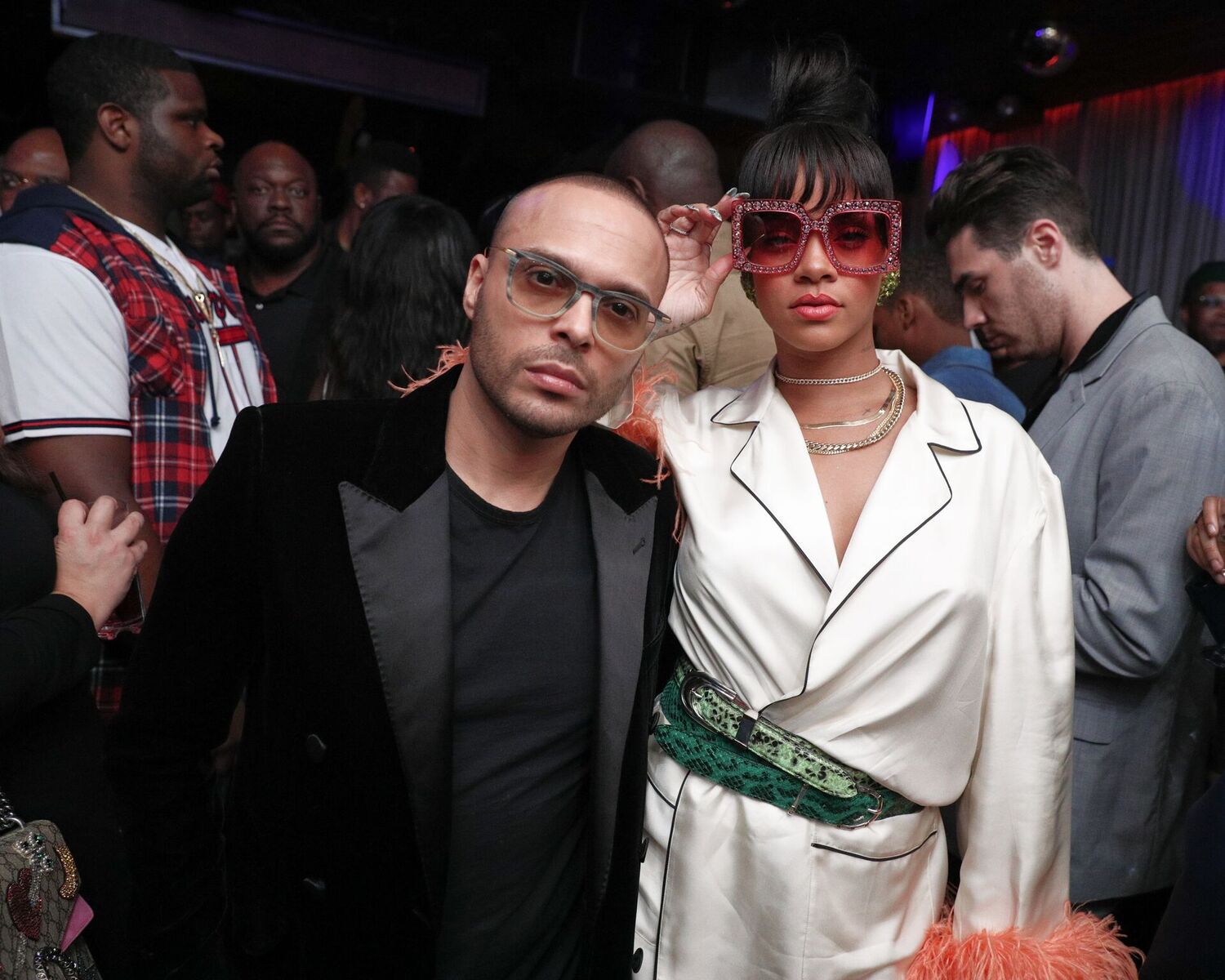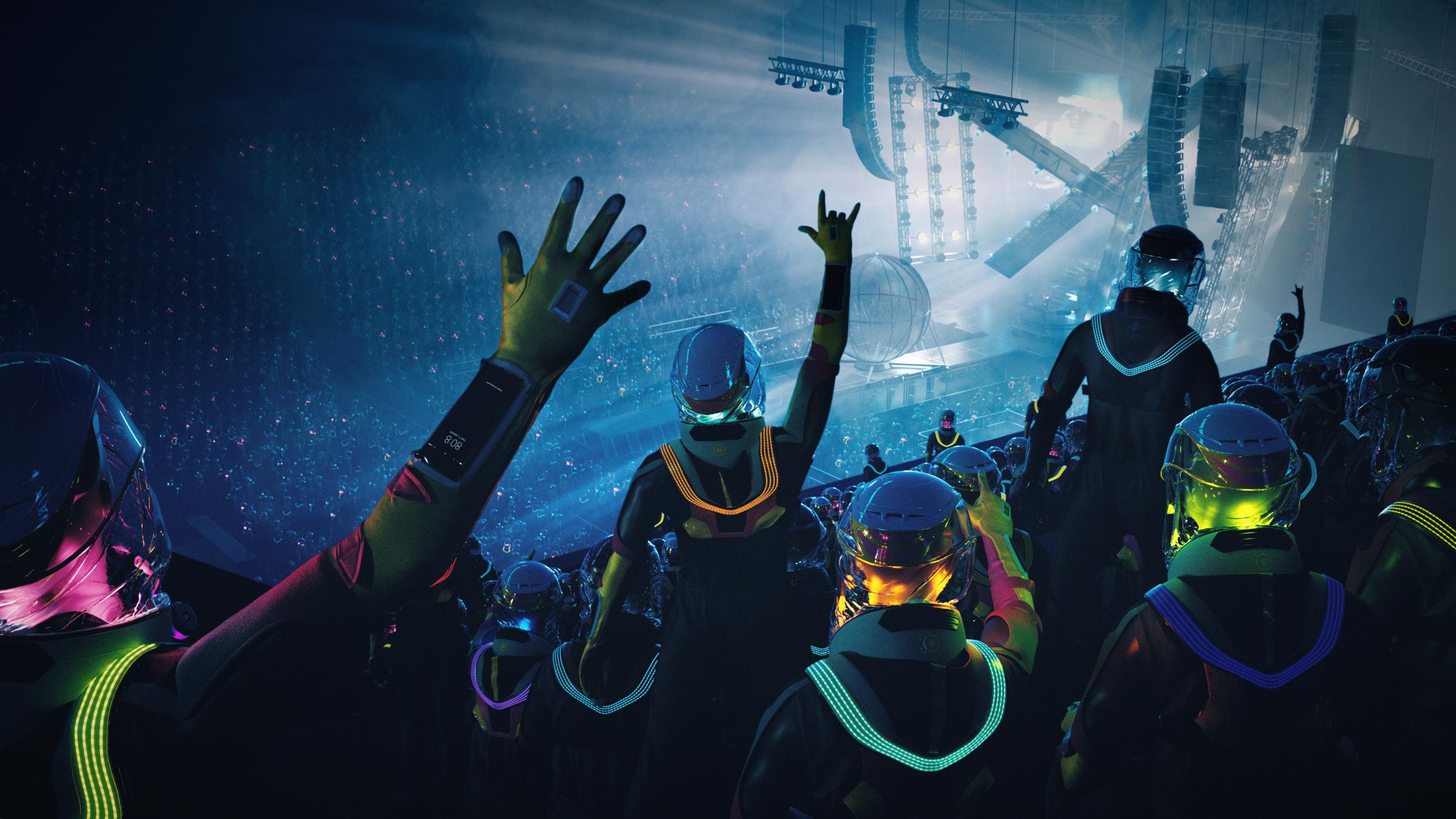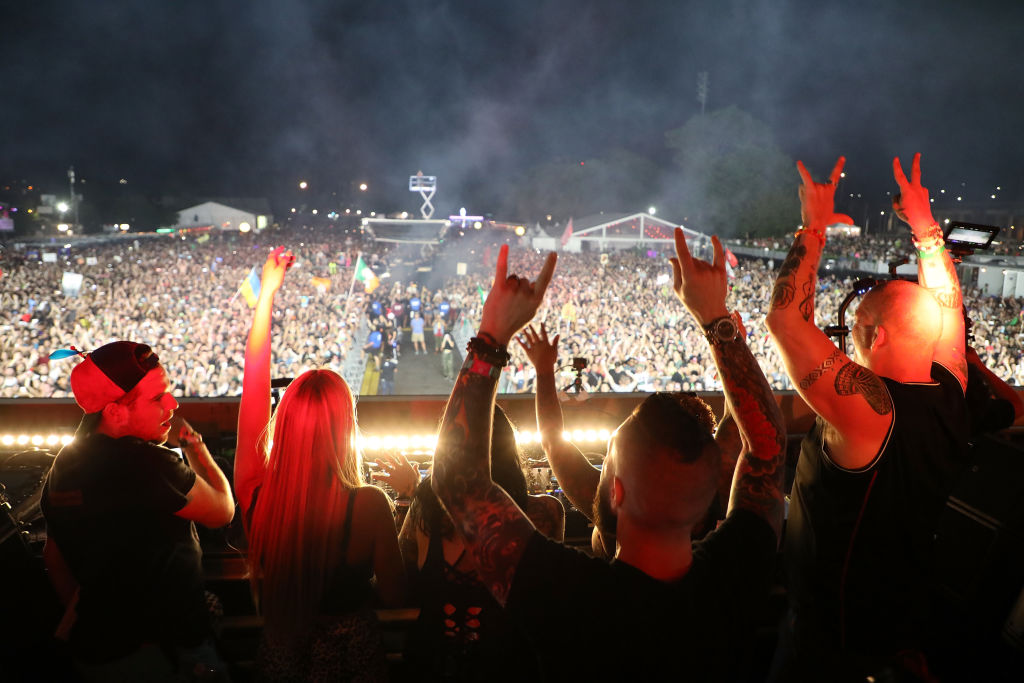On an average midnight outside Up&Down on New York City’s 14th Street, crowds of hundreds of clubgoers in shiny dresses and expensive sneakers would throng five-deep outside the velvet ropes, elbowing each other to get to the dim, hedonistic cavern within. Inside, they would find tables spilling over with oversized magnums of champagne and rowdy revelers, thumping music and shoulder-to-shoulder crowds. They might spot Drake hidden in a booth, or Leonardo DiCaprio, or Naomi Campbell. The sparkle, the sweat, the crush of flesh: as nightlife shutdowns drag into their fourth month in some U.S. cities, these hallmarks of a big night out are relics of a pre-pandemic U.S., before “social distancing” ruled and physical contact became a health concern.
Richie Akiva, the man behind Up&Down and a lucrative portfolio of similarly glitzy clubs and restaurants around the world, spent almost every night of the last 20 years out partying. In mid-March, that came to an instant halt as Akiva, like every other non-essential business owner, temporarily shut down operations. His clubs have sat vacant ever since, dance floors gathering dust, while his staff on unemployment. Up&Down is now scheduled for permanent closure, a representative from Akiva’s team confirmed to TIME.
“I miss people’s smiles. I miss being there for a twenty-first birthday. I miss giving people that outlet—being free, letting go of their everyday problems,” Akiva told TIME in May, when he was starting to make tough decisions about his business’s future. Akiva has been a nightlife mainstay since he was a 1990s scene teen promoting parties and hosting guests like Jay-Z . But the pandemic, more than the 9/11 attacks or the 2008 economic recession, seems to have shaken him—and his cohort in the nightlife business.

Estimates put the bar and nightclub industry at over $25 billion in annual revenue in the U.S. for 2020, while the concert business was predicted to reach about $35 billion this year. But nightlife remains uniquely vulnerable to the long-term effects of both the economic and social shifts COVID-19 has wrought. At this point, any hope for a return to normal had been squashed, with fuzzy reopening timelines extending into the fall in many cities and nightlife centers. And even as businesses began opening in fits and starts across the country—and around the world—the nightlife industry in the U.S. remains shuttered. Indoor nightlife isn’t even listed at all on the extended roadmap of New York’s phased reopening plan, and reopened clubs in places including South Korea have been linked to viral spread, while illicit international raves are meeting resistance.
New Yorkers can find underground parties in New York City basements with a little bit of hunting, and in Los Angeles, some people have skirted the rules at hotels that are accepting guests, congregating at rooftop bars. Private house parties already abound. But these options remain solidly in opposition to health guidance, potentially causing outbreaks. For nightlife businesses and venues looking for above-board solutions to their shutdown woes, there’s really no safe solution as long as the virus is still spreading. Science cautions that reopening at regular capacity will only be safe once a vaccine has been distributed, based on new concerns about airborne infection in indoor spaces. No one knows when that might be possible. And industry leaders like Akiva know that no one is clamoring to hang out at an empty or partially-empty club.
“As a [nightlife] business, you almost don’t want to open,” Akiva says. “There’s not going to be any tourism, any travel. With the rent and the expenses that it takes to run these places how they used to be run, it’s very hard to sustain yourself when there’s none of that.” So instead, he and others are looking for other ways to stay alive while stuck in shutdown purgatory.
Suiting up
The Micrashell would not look out of place in the Tron movies, or worn by Zenon: Girl of the 21st Century on her Disney-approved spaceship. Designed to keep people safe from infection even while gathering en masse, it’s a Hazmat-like, air-tight, “rave suit” with neon panels and a shield helmet. When Miguel Risueño and Corey Johnson, the founders of events production business Production Club, first started circulating a prototype of their futuristic garment—complete with attached gloves and slots for a phone and drink canisters—on Instagram, it seemed like more of a video game concept than a real, workable solution. But it is very much real, and Risueño and Johnson believe it could help solve the conundrum of industry-wide shutdowns that have cleared their slate until, they expect, well into 2021. Production Club helps put on large-scale festivals and parties that cater to thousands, exactly the kind of events that will be the last to return.

“We felt like, after humans have been socializing for thousands of years, we cannot just go and substitute that with virtual [events]” Risuenõ says. He and Johnson were also spurred on by images of partiers pursuing life as normal—with potentially infectious consequences. And, of course, they need to maintain their company’s viability. Their answer was to use the tools at their disposal to come up with a way to gather in-person, at scale, with sufficient safeguards in place. The first physical prototypes are in the process of being made.
The suit is intended as a business-to-business product, something that large venues or promotion companies will purchase to distribute to end users for a conference, arena concert or rave. Imagine showing up at L.A.’s Staples Center for a stadium concert, and wearing a Micrashell for the evening before returning it for industrial cleaning: the show would, at least, go on.
And if it looks a little strange? They’re not bothered.
“I thought people would say, ‘Aw, that’s weird.’ But if it means you can go to a show and see people, it outweighs the weirdness,” co-founder Corey Johnson says. “It doesn’t look like a hazard suit; we’re kind of on the boundary of going one step beyond medical gear and actually doing something that people would want to wear and has a certain style about it, but also checks the medical boxes as well.”
Banding together
Other ideas have emerged to bring people together for a night out, too, some safer than others: drive-in concerts where you stay safely ensconced in your car. Virtual club nights conducted from the comfort of your living room. Speakeasy-style gatherings with limited attendance, held underground. Socially-distanced raves, replete with masks. But these are all temporary fixes, as Akiva said: they don’t meet the economic needs of the industry, and early hype for many has fizzled as the novelty wears off.
One of the biggest problems to the industry as a whole is a lack of adequate access to funding to help keep venues and clubs from shuttering while rent bills keep coming. “I think the government response overall has been lackluster, to put it mildly,” Johnson says. “The government works with airline companies, it works with energy companies, it works with military companies. So it makes sense when something goes wrong, it will work with those people. The government does not have a great relationship with restaurants, hospitality, nightlife. I just don’t think those bridges really exist.”
That’s where the National Independent Venue Association (NIVA) has stepped in. In March, Audrey Fix Schaefer, publicist for Washington, D.C.’s popular 9:30 Club, began organizing the far-flung constellation of independent venues staring down an uncertain spring of closures. In a matter of weeks, over 1,600 members—representing once-vibrant bars, clubs and performance spaces from every state in the country—signed up, aligning in an attempt to lobby for government funding for the first time. “We have to lobby like an industry whose life is on the line, because it is,” says Schaefer. As many as 90% of the venue owners surveyed said they wouldn’t be able to hold on past six months from the shutdown; 55% predicted they’d last three months at most.
As the months wear on, the countdown clock to bankruptcy and mass closures is ticking. “Frankly, I’m surprised if it will be that long,” she says of these predicted timelines before permanent closures begin. “We were the first to close, will be the last to open, have zero revenue and all the expenses.” While some businesses, including Akiva’s, have successfully nabbed some of the $659 billion earmarked by the CARES Act for low-interest small business loans (through its Paycheck Protection Program, or PPP), many others remain out of luck.
Brooklyn’s Elsewhere is one of the venues working with NIVA. Opened in 2017, Elsewhere is a multi-level, multi-room warehouse that hosts rooftop parties, concerts and club nights, drawing acts ranging from pop star Charli XCX to rapper YBN Cordae to alternative party collective Bubble_T. The venue’s normal capacity is over 1,000. In an average summer week, it would bring in six figures, according to founder Dhruv Chopra. Now, as it has cautiously reopened with stringent social distancing and mask policies, including temperature checks upon entry, six-foot spacing, mandatory mask-wearing except while seated and a max rooftop capacity of 50 people, that’s down to a few thousand dollars.
Keep up to date with our daily coronavirus newsletter by clicking here.
For now, Elsewhere has decided to work with a food partner and create a kind of “beer garden,” repurposing its outdoor space in the one way it can. “It’s not like Elsewhere is wildly profitable,” says Chopra. “We’re better than your average bear, but it’s a rough business with single-digit margins.” Chopra has little long-term optimism. “We are in the same purgatory we’ve been in for a while,” he says. “We’re scrambling to try new things, but it’s a drop in the bucket. We’re still staring down the barrel of 12 months of existential dread.” He predicts it will take two to three years to get back on track, and in the meantime is anxious about what happens after unemployment benefits for his staff run out. And while he’s still paying their health insurance, funds are dwindling. The result is a “war of spirit attrition” for the industry as a whole.
In the meantime, NIVA coordinated an email campaign and sent an open letter to Congress in June signed and supported by a range of top artists—Lady Gaga, Billie Eilish, Cher, Willie Nelson—many of whom depend upon these venues for concerts. The #SaveOurStages push continues, now focused on passing the bipartisan RESTART Act, which would extend the terms of the PPP to serve businesses that have been hit particularly hard and have the least chance of picking up revenue in the near term.
Nightlife is a varied beast; it’s the hallowed bottle-service halls of Akiva’s empire, but also the dive bars that support open mic nights where performers get their start, and the club spaces where DJs can spin culture into being. In early July, the U.K. government approved $1.5 billion in culture funding, part of which will go towards supporting music venues. The U.S. has no such plans in place. The potential result will be huge loss—and not just on the economic level.
Cultural evolution on hold
“Music venues, nightclubs, nightlife are part of what I call the ‘holy trifecta’ of cultural evolution: you have to have artist residences, artist practice spaces and artist performance spaces for art and ideas to evolve and get tested out,” Chopra says. The shutdowns mean the exchange between artists and audiences is on indefinite pause. “As a result, there won’t be as much artist evolution; you won’t see artists breaking out,” he says.
Plus, parties matter. “These are places where outside ideas, freaks, weirdos, fringe ideas, fringe art—these concepts come into our venues, become cool, and become more mainstream and more accepted. Every civil rights or human rights movement has also generally been accompanied by a musical movement,” Chopra says. “It helps create space for those of us who don’t fit in to be ourselves and become accepted. Culture and art help us become a more just, egalitarian society. From the beginning of time until now, that’s happened at night.”
HardCandy, a professional DJ, played her last gig on March 14 at a Brooklyn afterparty for the Noire Pageant, a burlesque show with an eye toward the POC community. The question ever since: now what? “Quarantine just weighs on your soul,” she says. “Nightlife was pretty much my life.” She misses the serendipitous in-person connections of a night out that turns into a chance to play music at 6 a.m. as the sun rises over an eclectic group of dancers, filled with the excitement of the unknown. After five years as a DJ, she is certain it’s her life’s passion; a pandemic won’t change that. It has changed her comfort in crowds, however, and she wonders about when she—or any other staff—will feel safe enough to return to a club.
For a while this spring, she was doing daily DJ sets on Instagram live. But reading comments isn’t the same as reading the energy of a room, and learning the ins and outs of Zoom and Twitch presents new technical challenges. Not that it’s stopped her: “If the future of nightlife is going to be digital, I’ll figure it out,” she says. But first she’s planning a move to Miami at the end of the summer, where at least she can continue to DJ at outdoor events while New York buttons up for the cold. Still, some communities are thriving online: HardCandy says the drag scene has perhaps discovered new avenues both of creativity and safety by performing from home. “I’ve seen the community band together and get closer,” she says.
But for now, the night is not the same. Justin Kleinfeld, founder of dance music PR agency Rephlektor Ink. and marketing agency Bampire, is playing a waiting game and looking to the reopening of sports venues to lead the way. The tours for his roster of acts, which includes DJs like Paul Oakenfold and festival mainstay Above & Beyond, were shut down while they pivoted to virtual events. In the meantime, he’s hoping the pause offers artists a chance to reimagine their work while touring is on hold. “X amount of months down the road, we will see an incredible array of new music,” he predicts. He imagines a “hybrid” scenario in which clubs consider minimal in-person attendance with a live act, while selling tickets to the livestreams.

Creativity is taking center stage for businesses, too. Schaefer has seen venues rent out their marquees to individuals as a small but fresh income source. The live-streaming industry is booming with a glut of programming, including dance parties, concerts and DJ nights. More intimate events, limited house parties and invite-only experiences might yield a new type of nightlife that is less about ostentation and social-media sharing and more about curated experiences and authentic connection. But for the businesses themselves, these types of events rarely result in anything other than nominal revenue.
Risueño, of Production Club, remains optimistic that this can be an opportunity to think differently about the range of experiences that nightlife can be a part of. And most everyone predicts that when something like normalcy returns to social interactions, the appetite for the nightlife world will also come back more voraciously than ever. It’s one thing to have a Zoom dance party in your sweatpants with friends. It’s another to be in a sweaty, glittering space, sharing your joys and frustrations, dancing along to a pulsing soundtrack, surrounded by a great rush of humanity. “This country was built on freedom and being able to express yourself, not in fear,” Akiva says. “When this is all said and done, I’m going to throw the biggest party anyone has ever seen. And when this pandemic is settled, nightlife will be bigger and better than it was.”
Please send any tips, leads, and stories to virus@time.com.
More Must-Reads from TIME
- Donald Trump Is TIME's 2024 Person of the Year
- Why We Chose Trump as Person of the Year
- Is Intermittent Fasting Good or Bad for You?
- The 100 Must-Read Books of 2024
- The 20 Best Christmas TV Episodes
- Column: If Optimism Feels Ridiculous Now, Try Hope
- The Future of Climate Action Is Trade Policy
- Merle Bombardieri Is Helping People Make the Baby Decision
Write to Raisa Bruner at raisa.bruner@time.com